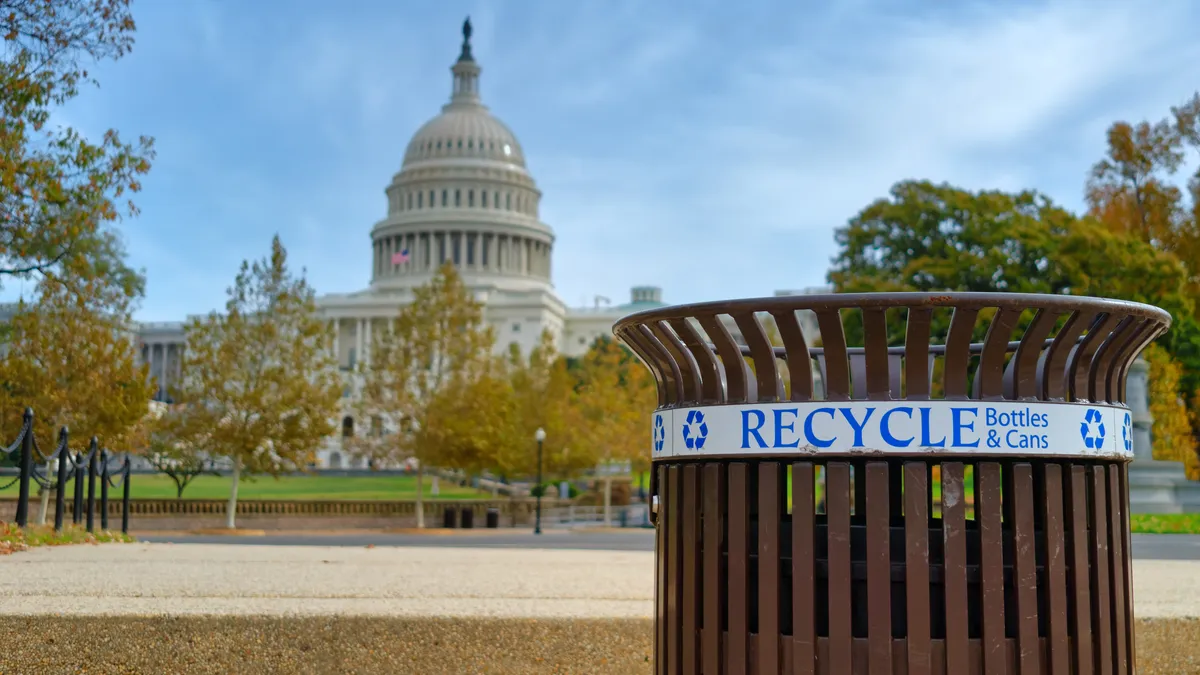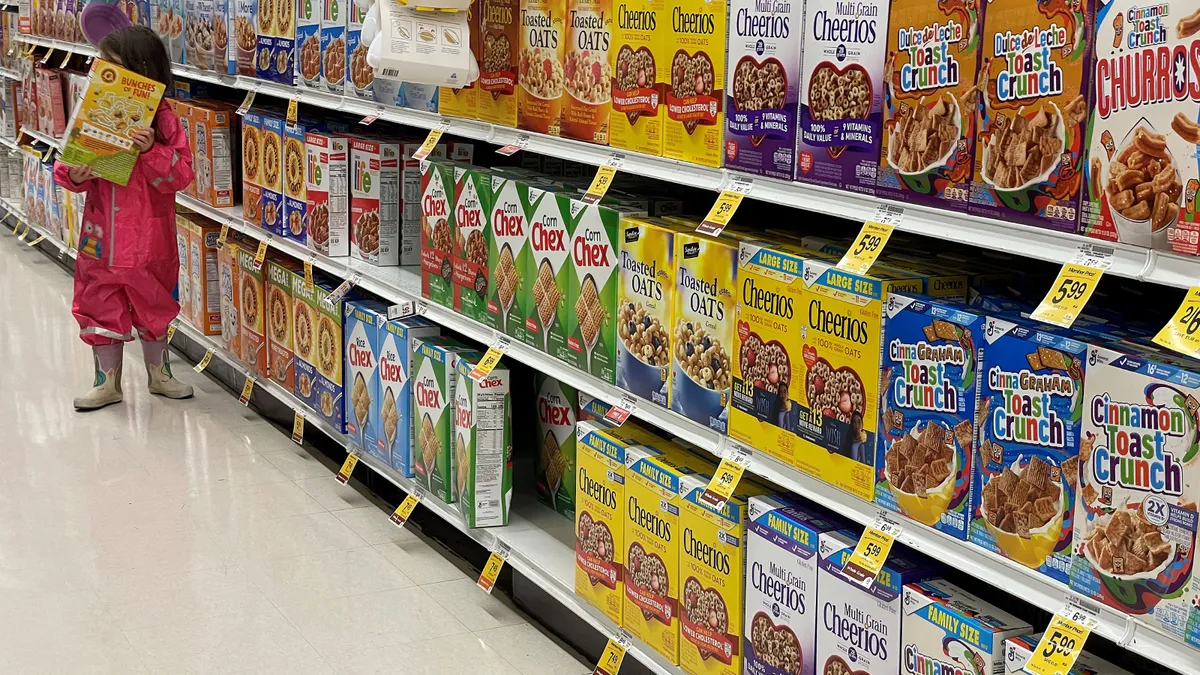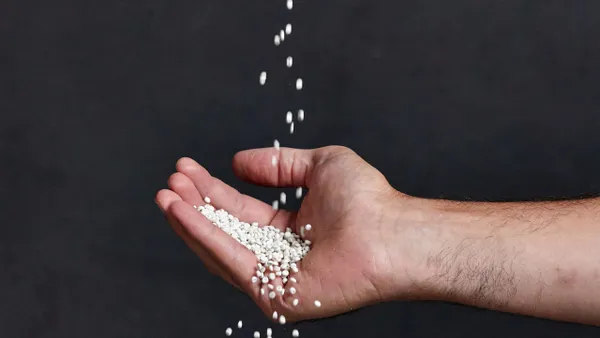The American Forest & Paper Association used different methodologies than in the past to calculate and report its 2023 industry recycling data, released Thursday.
It now reports recycling ranges instead of specific numbers. In addition, the numbers in one category — corrugated — look significantly lower than in previous reports. This comes after a controversy in recent years over recycling rates that some considered too high, which has prompted other industry observers to develop their own calculation models.
“These updates recognize [that] the way U.S. consumers interact with our recycling system is changing, combined with a rapidly evolving global supply chain,” said AF&PA President and CEO Heidi Brock during a Thursday webinar.
Plus, providing a range reflects that these numbers are estimates, Abigail Sztein, AF&PA’s executive director of recovered fiber, said during the webinar.
AF&PA reported the 2023 paper recycling rate was 65-69%, with 46 million tons recycled, compared with the 67.9% rate it previously reported for 2022, with 49.1 million tons recycled. The 71-76% cardboard recycling rate is significantly lower than 2022’s 93.6% rate calculated with the association’s “traditional” model. AF&PA long had used that methodology to report cardboard recycling data, resulting in rates near or above 90% for more than a decade.
Last year, the association introduced an “effective recycling rate” in addition to the traditional, due to changing industry factors. The effective recycling rate for OCC in 2022 was 80-85%.
This year, AF&PA also used the new methodologies to recalculate its 2022 numbers for historical context, Sztein said. Based on these recalculations, paper and cardboard categories both experienced a year-over-year increase from 2022 to 2023. The recalculated 2022 total paper recycling rate is 62-66%, instead of the 67.9% the association previously reported, and the recalculated 2022 containerboard recycling rate is 70-75%, compared with the 93.6% previously reported.
“Today's updates reflect extensive and intentional work that sought to ensure our annual recycling rates directly address the questions we are being asked related to available fiber for recycling are compatible with policies and regulations that we face in the U.S., and that our audiences understand what our rates encompass,” said Terry Webber, AF&PA’s vice president of industry affairs, during the webinar.
The updated, supply-based rate allows the industry to measure “effectiveness and opportunity to improve the recycling system through a comprehensible calculation of both the share of paper being recycled and how much more paper is available to be recycled,” Webber said.
Dissenting methodologies
Some industry observers have pushed back on the AF&PA’s previous cardboard recycling rates, claiming they overstated what’s actually occurring in the marketplace.
Earlier this year, Bloomberg Intelligence released its own 2023 cardboard recycling rate data, landing on 66%, down from last year’s 67%. Ryan Fox, corrugated packaging market analyst at Bloomberg Intelligence, arrived at that number with Myles Cohen, founder of consulting firm Circular Ventures and former president of Pratt Recycling, based on an alternative methodology they introduced two years ago.
Perhaps the biggest differentiator in their alternative calculation is how the equation includes boxes that are imported from other countries with goods in them, Fox said. Since its introduction, this alternative model has sparked debate and put pressure on the industry to reevaluate how it views recycling rates.
This autumn, another data point entered the mix. Bill Moore, president at Moore & Associates, announced at the Paper and Plastics Recycling Conference on Oct. 24 that his consulting firm developed an alternative calculation that shows an 82% recovery rate for corrugated boxes.
The firm undertook its own four-month development of a “comprehensive approach to coming up with a recovery rate” because of “the controversy on the corrugated recovery rates,” Moore said this week ahead of AF&PA’s Thursday presentation.
A key to Moore & Associates’ model is that it worked with “client-focused recovery rates” for boxboard grades, he said. This had “never been done before, as these grades are not recovered in boxboard grades themselves, but are found in a range of OCC and mixed paper grades,” Moore said. Also key was the ability to examine recovery at the state level.
“A good test of our model was [that] even though a number of the input data took a different route than AF&PA, our corrugated recovery rates by the traditional paper industry method came out very close to AF&PA's number,” Moore said. Still, they “will need to dig deeper into AF&PA's data and methodology to see how it differs” from Moore & Associates’.
In addition to not accounting for boxes imported with goods in them, AF&PA’s traditional model included scrap material from converting operations as well as non-paper contaminants in recovery volumes, Moore said. And the traditional approach did not consider the additional moisture content found in recovered grades compared with the board’s moisture upon production.
AF&PA addressed these factors during the webinar, noting new adjustments for cardboard and other paper-based consumer packaging in commodity bales.
“AF&PA has improved our estimate of net imported product packaging using more detailed free data and better estimates for packaging,” Sztein said. While discussing contaminants in recovered materials and moisture that paper and cardboard absorb after production and prior to recovery, she said: “This damp and wet paper cardboard weighs more and creates a variation ... impacting data on weight.”
Fox and Cohen both agree that AF&PA’s switch this year to report a range instead of a specific number is good practice. Plus, the new 71-76% OCC recycling rate “is certainly more realistic than the 88-94% types of recycling rates that they've mentioned in the past,” and “I applaud them for that,” Cohen said.
However, Cohen says it’s curious that only the OCC rate, not the overall paper recycling rate, changed significantly following AF&PA’s introduction of new methodologies. He’d also like to see more transparency, such as the association releasing all the data it uses to arrive at its calculations rather than just the final recycling rates.
Yet the two noted the difficulty with landing on firm numbers. Fox said it’s nearly impossible for any entity to gather and analyze all of the necessary global data.
“My [cardboard recycling] number is 66%, and I still think it’s high. But we just don't have all the data to prove it,” he said. “We have to say this is an estimate, an approximation.”
Industry-wide shift?
An attendee on the AF&PA webinar posed a question likely on many others’ minds: Amid the recent discussions about alternative models and other groups, such as the U.S. EPA, looking to overhaul data calculations and reporting, do AF&PA’s changes signal a broader, industry-wide shift in how recycling rates generally are calculated? Or is this realignment specific to paper?
AF&PA didn’t directly address whether an industry-wide shift is afoot. Rather, representatives reiterated the association’s impetuses for making its alterations.
“We undertook this change in order to meet the specific needs we see for our material,” especially with the emergence of policy changes such as extended producer responsibility, AF&PA’s Webber said. “As other folks are thinking about recycling rates or packaging in the marketplace ... they are thinking about it as a percentage of total material available for recovery.”
“This is a very complex exercise” and arriving at these estimates involved “a lot of very laborious detail work,” Webber said. “There are lots of folks who have a lot of work ahead of them to come up with something similar to this.”
Regardless of their differences in final recycling rates, various sources said the fiber industry should be commended for its recycling work.
“Importantly, our industry is actually recovering paper to manufacture new products,” AF&PA’s Sztein said. “Paper recycling is a success story because of the industry's investments, education efforts, the wide availability of paper recycling programs, and the millions of Americans who recycle every day.”
Circular Ventures’ Cohen and Bloomberg Intelligence’s Fox agree that the recycling rate is something to be proud of.
“Celebrate the fact that nearly 30 million tons of OCC was collected — either reprocessed by paper mills or exported to other countries that were going to use it in paper products. This is a great number,” Fox said.






















